Sleeping
well is not easy. Bad posture, an uncomfortable bed, and a buzzing mind
can keep you up all night, and you wish you could do something about
it. How well you sleep depends on how your day goes by and the manner
you prepare for sleep. Most importantly, the position you sleep in
matters a great deal. To know more about sleep positions and their
various pros and cons, keep reading.
Before that, let’s find out about the importance of sleep.
A good sleep rests your body and helps it to build a healthy immune system. And, in general, the kind of sleep you have will decide your mood the following day. It also has an effect on the way you think and react. Therefore, an individual who sleeps well is more attentive, makes better decisions, and is more creative and healthy.
Now, let’s find out the different positions we sleep in and which works best for your health.
Before that, let’s find out about the importance of sleep.
Why Is Sleeping Well Important?
Sleeping peacefully every day for 6 to 8 hours is necessary for a healthy body and mind. A sound sleep will allow your brain to prepare for the next day and gear you up to learn and remember new information. Adequate sleep gives your body an opportunity to heal and repair the heart and the blood vessels, protecting you from heart diseases and high blood pressure.A good sleep rests your body and helps it to build a healthy immune system. And, in general, the kind of sleep you have will decide your mood the following day. It also has an effect on the way you think and react. Therefore, an individual who sleeps well is more attentive, makes better decisions, and is more creative and healthy.
Now, let’s find out the different positions we sleep in and which works best for your health.
Types Of Sleeping Positions
- Sleeping On The Stomach
- Sleeping On The Sides (Right Side And Left Side)
- Sleeping With The Legs Up
- Sleeping On The Back
1. Sleeping On The Stomach
There are days when after a long day of work, all you want to do is fall flat on the bed and doze off. Well, tucking your face into the pillow might be comforting, but in the long run, it doesn’t do much good for you.Pros: The only good thing about sleeping on the stomach is that it eases snoring.
Cons: Sleeping on the stomach leads to waking up in the morning with pain and discomfort. It strains your neck, places your head at an uncomfortable angle, and pulls your belly down. It flattens the natural curve of your spine and leads to lower backache. Sleeping on the stomach is not recommended during pregnancy.
Tip: Sleeping on the stomach is considered the worst sleeping position, and experts recommend you gradually shift to sleeping on the side with the help of pillows.
2. Sleeping On The Sides
Studies prove that most people prefer to sleep on their side. It could either be curled up in a foetal position or a relatively straighter angle. The side you sleep on also makes a difference. Sleeping on the right side does not have the same effect as sleeping on the left. Each has its unique benefits and side effects. Check below to find out.Right Side
Cons: If you sleep on your right side, you are constricting your entire cardiovascular system as it lies on the right side of your body. This sleeping position strains the lungs and compresses the rib cage. It hampers blood circulation, making you move during your sleep to balance out the distribution. Avoid this position if you can, and opt to sleep on your left side.
Left Side
Cons: If you curl up too much, it restricts deep breathing.
Tip: To make your side sleeping position better, place pillows between your knees to align your body correctly between your hips and the joints.
3. Sleeping With The Legs Up
While you sleep, your legs have a tendency to move up and down. Quite often, you wake up to see your legs pulled up closer to your chest. It could either be one leg higher up than the other or both pulled upwards.Pros: Sleeping with both legs up takes the weight off the pelvis area and is helpful for those suffering from backache.
Cons: Sleeping with one leg up causes unevenness in the body and is damaging to the pelvis. It leads to a backache.
Tip: To prevent your feet from cycling while you are asleep, place a medium-sized thick fluffy pillow in between your legs. The pillow will make it difficult for your legs to move up and down.
4. Sleeping On The Back
Sleeping on the back is the best way to sleep. In this position, your face is facing straight, and the back of your head is resting on a pillow. The pillow elevates your head slightly, placing your stomach below the food pipe. This sleeping position works best for your health.Pros: Sleeping on the back distributes body weight evenly on the spine and protects your face from wrinkles that come from digging your face into a pillow. It eliminates any possibility of acid reflux or food coming back up the digestive tract. It is pain-free and comfortable.
Cons: This sleeping position is not good for those who snore. The throat and stomach are pulled down by gravity, which makes breathing difficult.
Tip: Add soft and comfortable pillows to your bed. Keep one or two below your head to align your body properly.
Source Click here
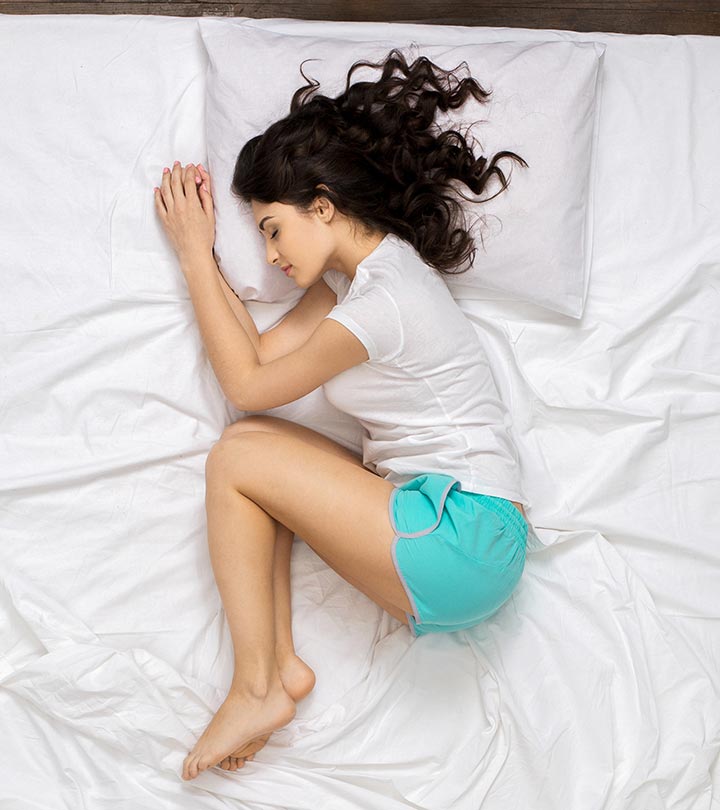
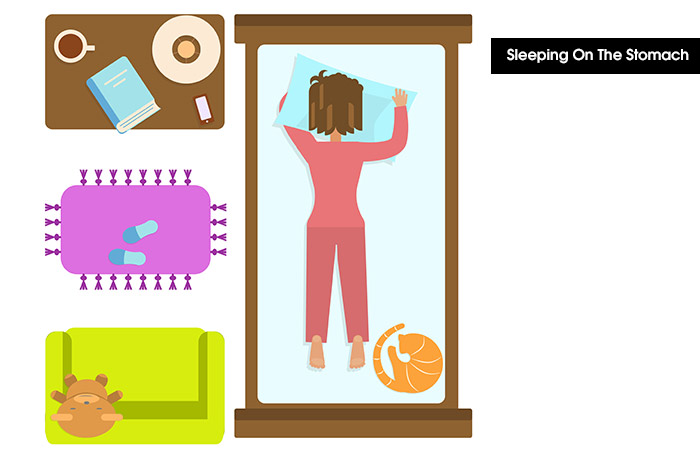

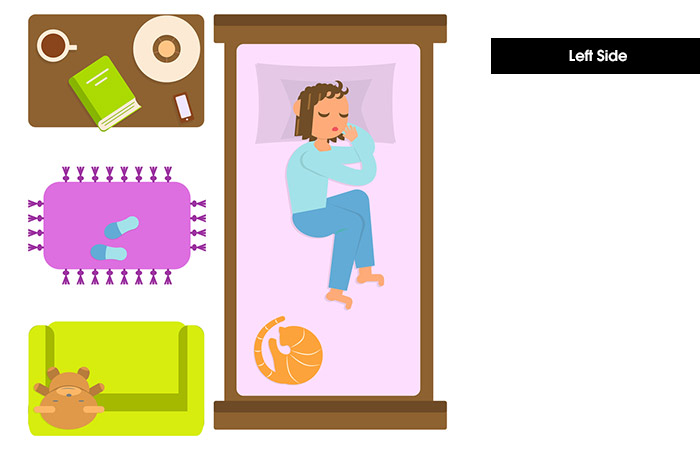
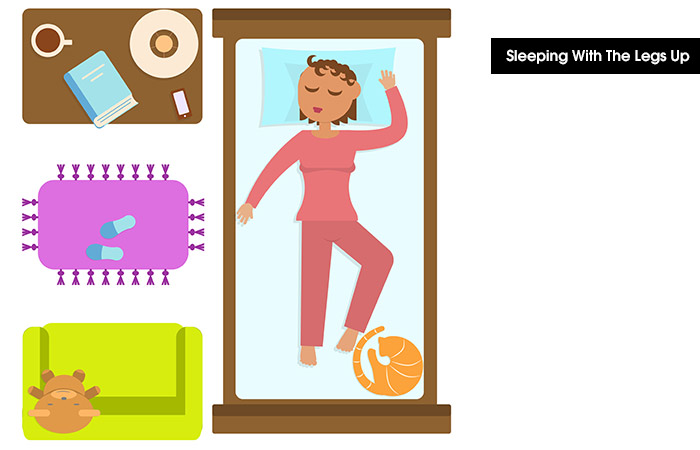
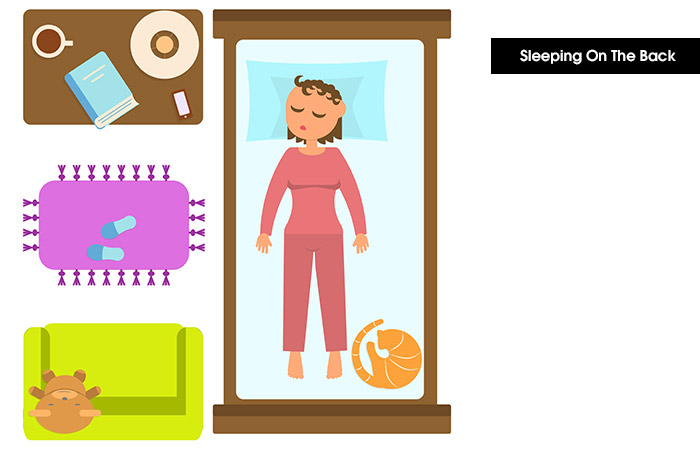
Comments
Post a Comment